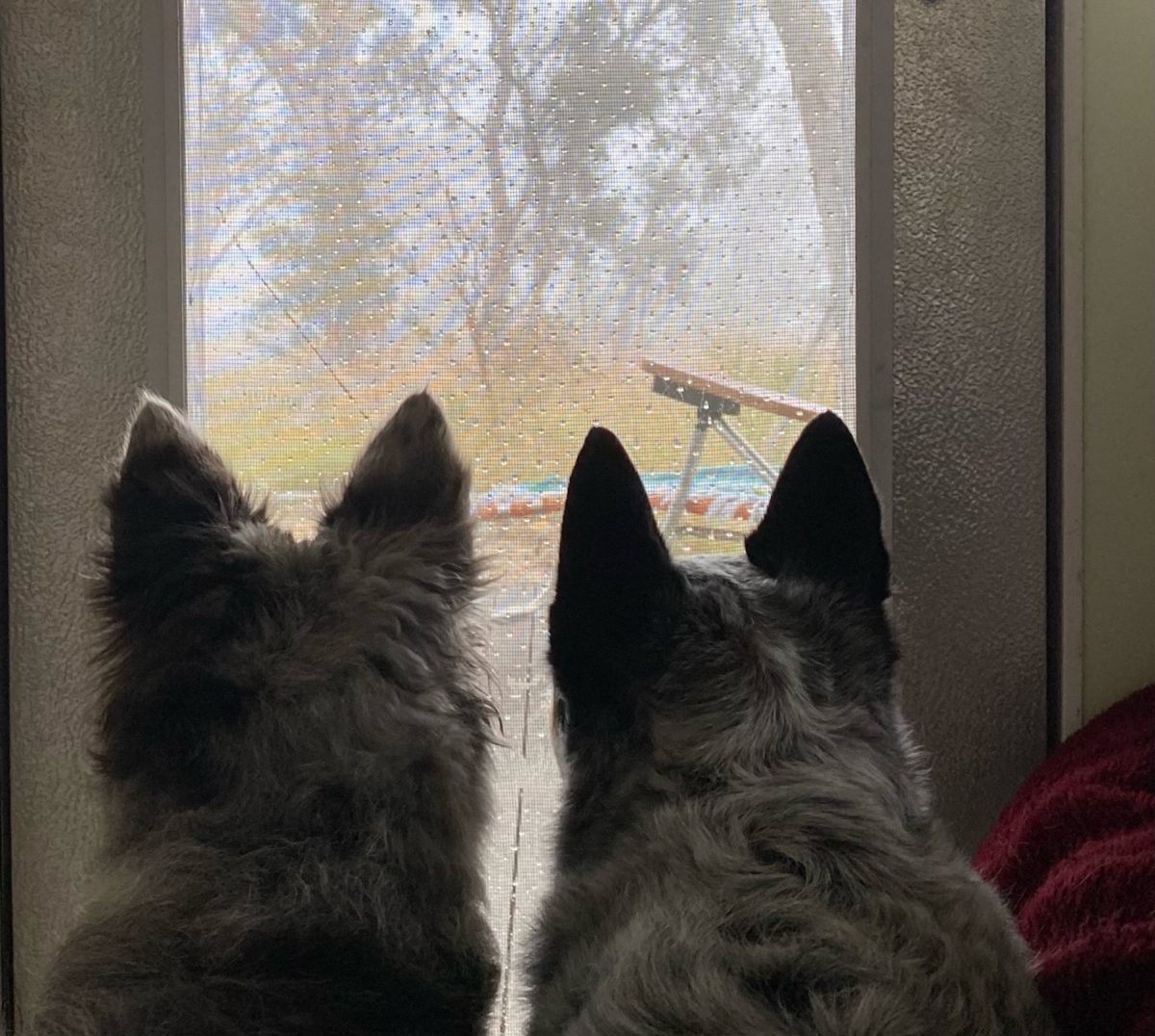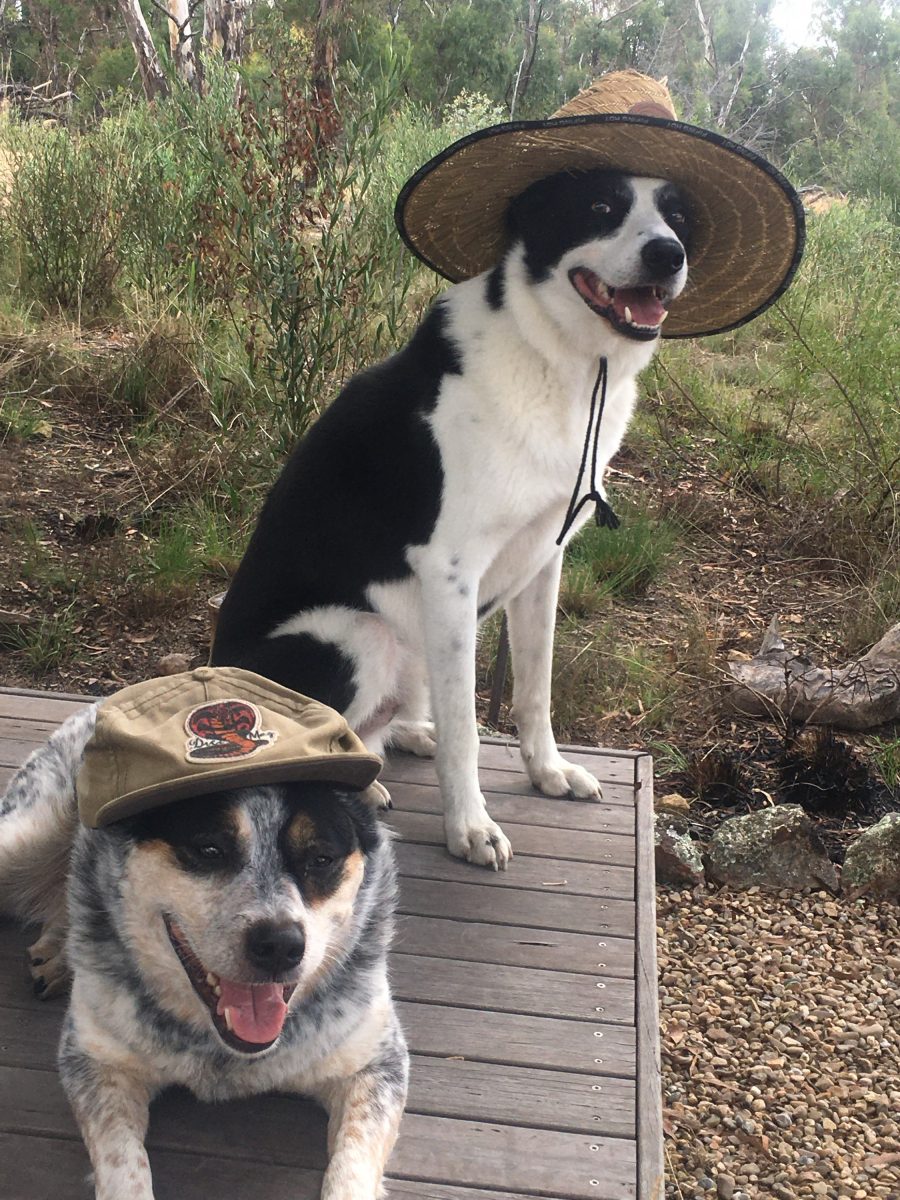
Pets and wild weather don’t always mix, and keeping four-legged family members safe when they panic can be quite the undertaking. Photos: Jane Wild.
It’s pretty safe to say everyone has experienced the rush to batten down the hatches and get the last of that washing in when a storm is on the way.
We all know what it feels like, and when you’re running around on a time limit the last thing you want to do is wrangle your pets. But if they’re prone to panicking during wild weather, the worst thing you can do is punish them.
Sure, non-stop howling might be excessive. Yes, damage to doors or carpets is a frustrating expense, and cleaning up a nervous wee isn’t pleasant.
The thing is, thunder, lightning, heavy rainfall and changes in air pressure can all be massive sources of stress for your dog or cat. Simply put, they usually just can’t help it.
With the Canberra region now in storm season, Jane Wild from the Canine Behaviour Academy is imploring owners to remember their pets are just frightened, not being naughty, if they act up when the weather turns sour.
“It’s not uncommon for dogs, cats and other pets to panic during storms, but this is an emotional response,” Jane says.
”It’s not breed, age or training-related. They might react a little or a lot – they might hide under the bed, shake, bark/howl/yowl, or even damage property trying to escape the stress. I’ve heard stories of staffies breaking windows in an attempt to run from thunder.
“The most important thing to remember is they aren’t doing this to spite you or make your life harder. They’re just scared, and as their carer, it’s your job to keep them safe and reassure them as best you can.”
Jane says exposure at a young age is key to storm confidence later in life. Early training could look like playing thunder sounds on low while your puppy or kitten eats or relaxes nearby.
But what can owners do if they have missed this window, or adopted their pet later in life?

Jane Wild runs the Canine Behaviour Academy, helping owners train and connect with their dogs in Canberra, Bungendore and Braidwood.
Once animals are older, their fear becomes more set in stone. You can still work to expose them gradually, but if they just can’t become desensitised, it’s time to focus on making them as comfortable as possible in the moment.
“Try distracting them with a toy, forage mat, kong or treats,” Jane says.
“Pressure can also help from wrapping them in a favourite blanket or something like a thundercoat. Sometimes your company is all they’ll need to feel that little bit safer.
“If none of this works, it’s time to speak to your vet about short-term anxiety medication, especially if their behaviour poses a risk to themselves, you or your other pets.”
Short-term benzodiazepines such as lorazepam, diazepam (AKA Valium) and trazodone can be prescribed by your vet for relief in stressful situations like thunderstorms, trips to the groomer, long car rides or fireworks.
“There’s still a lot of stigma around ‘drugging’ your pets, but we’re talking about quality of life here,” Jane says.
“You can always get in touch with a reputable trainer to explore other avenues. In the meantime, if a storm rolls around, get your pet inside, sit with them calmly and try to see things from their perspective.
“I think a little empathy goes a long way.”
Original Article published by Morgan Kenyon on Riotact.







